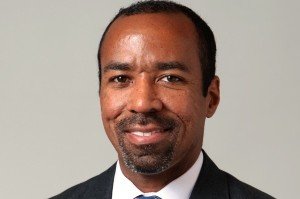The Hip Hop Revolution
The African American Alumni Council and the African American Cultural Center are hosting a Huskies Forever Weekend event for alumni and friends featuring Dr. Jeff Ogbar, a professor of history and the director of the Center for the Study of Popular Music at UConn.

Want to know what’s in store? Dr. Ogbar was kind enough to answer a few questions about his award-winning book, Hip-Hop Revolution: The Culture and Politics of Rap.
In a 2009 interview about your book, Hip-Hop Revolution…, you mention that young African American consumers of hip-hop are more likely to graduate high school and less likely to commit suicide. What are the positive messages hip-hop fans are taking away from the art, and how does consuming it empower them?
As strange as it may seem, I am quick to admit that there aren’t a lot of positive images that hip-hop fans take away from mainstream rap nowadays. It is true that young black people appear as cool, confident, and creative, but most of the images and lyrics in commercial rap today (unlike that of the early ‘90s) generally focus on pretty negative racial stereotypes.
My argument, however, is that the consumers of the art are not as impressionable as critics suggest. The consumers can actually make a distinction between fanciful (and outlandish) art and reality. Young African Americans can listen to the art, but their social, educational, economic, and political world is shaped by forces much larger than the music they consume.
Today’s generation of African American young people (18-29) are more likely to graduate from college and graduate school than any generation of black people in history. They also have the lowest teenage pregnancy and birth rates on record. The black homicide rate is actually lower now than any point going back to the 1940s. And multiple studies reveal that black males are more likely to endorse gender equality than any other racial or ethnic group of men—despite commercial rap’s typical misogynist lyrics.
Acknowledging that the world of hip-hop is very broad and diverse, are there broad strokes or trends you identify in how the evolution of hip-hop—and its messages on gender, race, and power—have paralleled major events in African American history in the last several decades?
I think that rap music in the late 1980s and early 1990s more closely reflected the major issues concerning black people: anti-apartheid, the drug trade, mass incarceration, crime, even health (to a lesser degree).
Today, however, commercial hip-hop music is narrowly focused on tropes of the thug. Very few mainstream rappers have forcefully addressed police brutality or the #BlackLivesMatter movement, or even care to challenge themes of misogyny. (I know I sound like an old fogey, but this is true.)
What do you hope alumni take away from the conversation?
I think that hip-hop music needs to be understood as a phenomenon that is significantly broader than today’s hottest rappers.
It includes the creative work of four elements:
- The dee jay
- The absolute beauty and acrobatic creativity of the b-boy/b-girl/breakdancer
- The sublime art of the graffiti artist
- The incredibly rich, literary styles of the very best poetics in rap set to music.
Even rappers who celebrate thug tropes may do so with sophisticated literary devices, such as intertextual allusions, puns, metaphors, complicated rhyme schemes, similes, metonyms, and more.
The big takeaway: Hip-hop has given the world a special creative genius that is often overlooked and ignored, partially because of the community that has developed the art. The attention that its most prominent element (rap) gets attention for is its crass and vulgar language, leaving outsiders to distill rap to little more than crude rhymes to beats.
But people are often surprised to learn that hip-hop is so discursive that scholars have written books on hip-hop and philosophy. One can learn about Derrida and Foucault, while examining philosophical intersections with Nas and Mos Def.
In addition to being a history professor and the author of an award-winning book, you are the director of the Center for the Study of Popular Music, an interdisciplinary institute here in Storrs. Could you talk a little bit about the Center and what its focus and direction will be in the next year or so, as well as its role in the broader community?
The Center for the Study of Popular Music helps bring together a rich cross-section of scholarly work done at UConn into a locus open to the wider community. There are professors who teach courses and have published work on everything from jazz to rock and roll, blues to hip-hop.
We have a huge repository of music-related materials at the Dodd Research Center from the Sam and Ann Charters Collection (primarily blues and jazz) and Fred Ho Papers Collection (primarily jazz). There is a new collection related to punk music as well.
Music is a wonderful, universal art that takes many aesthetic forms. It is festive, somber, sacred, secular, instructive, creative, resistive, empowering, reflective and more. We hope to broaden worldviews, bring our community together in intellectual and entertainment through the Center. Any support will bring us close to realizing these goals.